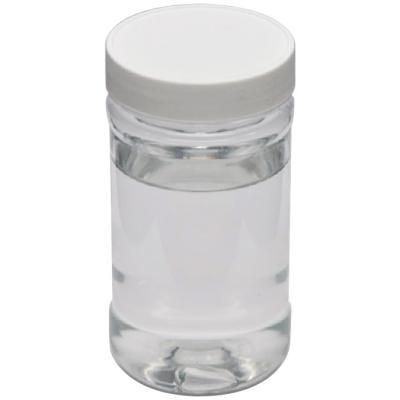I. Ammonia value
Most of the properties, such as softness, smoothness, and fullness on the fabric are mostly caused by amino groups in polymers. The amino content can be expressed by an ammonia value, which refers to the consumption number of 1 normal concentration of hydrochloric acid required for neutralization of the 1G amino silicone oil. Therefore, the ammonia value is directly proportional to the mole percent of amino group in silicone oil.
But the active hydrogen in the amino is easy to be oxidized and form chromophore,which will cause the fabric yellowing or slightly yellow light. For the same amino group, with the increase of the amino content (or ammonia value), the probability of oxidation increases, and the yellowing is serious.
With the increase of ammonia value, polar amino silicone oil molecules increased,which provides a favorable precondition for amino silicone oil emulsion, and micro emulsion can be made. The choice of emulsifier and emulsion particle size and size distribution is related with ammonia value.
II viscosity
Viscosity is related to the molecular weight and molecular weight distribution of polymers. Generally speaking, the higher the viscosity, the greater the amount of amino silicone oil molecules, the better of film property on the surface of the fabric, the softer and smoother the hand-feeling, but its permeability is poor, especially for strong twisting tightly woven fabric and fine denier fabric. Because the amino silicone oil is difficult to penetrate into the fiber, which will affect the fabric’s properties. If the fabric properties viscosity is too large, it will make the emulsion stability becomes worse or difficult to produce microemulsion. Generally, the product can not be adjusted only by viscosity, and the performance of the product is often balanced by ammonia value and viscosity. Generally, the low ammonia value requires high viscosity, thus balancing the softness of the fabric.
Therefore, smooth feel requires high viscosity amino modified silicone oil. However, in soft treatment, some amino silicone oils are crosslinked to increase the molecular weight. Therefore, the initial molecular weight of the amino silicone oil is different from that of the amino silicone oil which is formed on the fabric. Thus, the same amino silicone oil processing under different processing conditions, smoothness of the final product can have great difference. On the other hand, low viscosity amino silicone oils can also improve the fabric feel by adding crosslinking agents or by adjusting the baking temperature. The low viscosity amino silicone oil can increase the permeability, and then add crosslinking agent and optimize the amino acid silicone oil manufacting process, Thus it will synthesize the advantages of high viscosity and low viscosity amino silicone oil. The general amino silicone oil viscosity is in the range of 150 to 5000 centipoise.III. Reactivity
Reactive amino silicone oil can produce self crosslinking in finishing process, and the increasing of crosslinking degree will improve the fabric smoothness, softness and fullness, especially elasticity property. Of course, the common amino silicone oil can also increase the degree of cross linking when cross-linking agent or baking condition is added, so that springback can also be improved. For hydroxyl or methylamino amino silicone oil, the higher the ammonia value, the better the degree of cross-linking, the better the elasticity.
IV. Particle size and emulsion charge of microemulsion:
Amino silicone emulsion has small particle size and is generally less than 0.15 mu, so the emulsion is completely stable state of thermodynamic stability. Its storage stability, thermal stability and shear stability are excellent, and it is generally not demulsification. At the same time, small size particle increase the surface area, thus greatly improving the probability of contact with fabric, the surface adsorption capacity increases and the uniformity is improved, the permeability increased. So it is easy to form a continuous film, improve the fabric softness, smoothness and fullness, especially for fine denier fabric. But if the distribution of amino silicone oil particle size is uneven, it will greatly affect the stability of emulsion.



 English
English  日本語
日本語  Español
Español  tiếng việt
tiếng việt  Türkçe
Türkçe  ไทย
ไทย  українська
українська  हिंदी
हिंदी  বাঙালি
বাঙালি  اردو
اردو 
